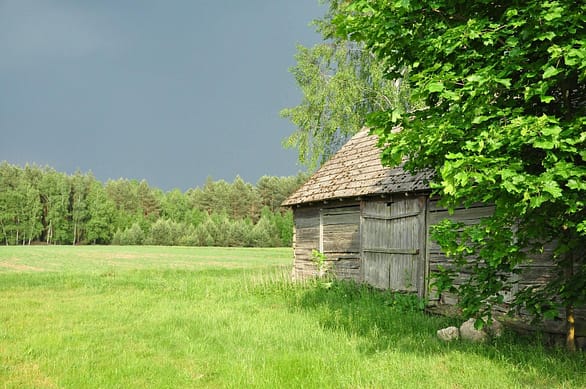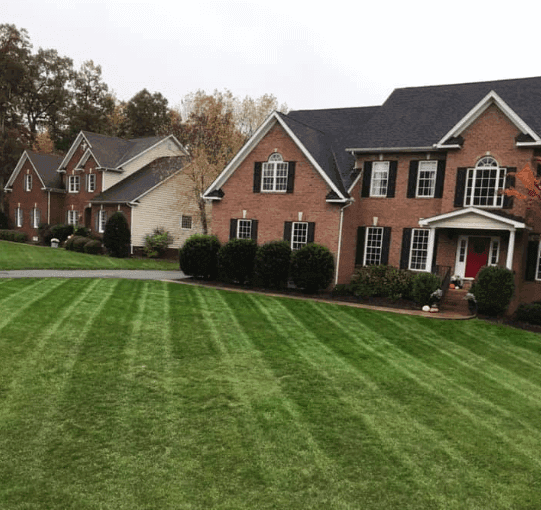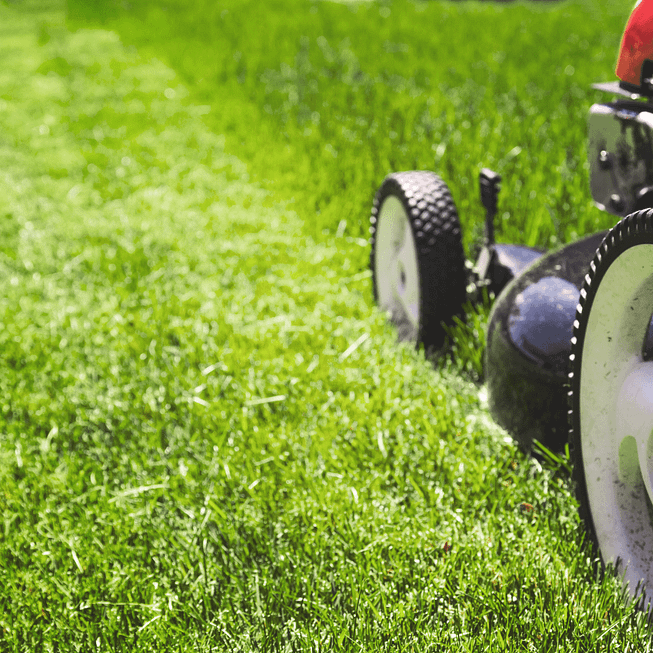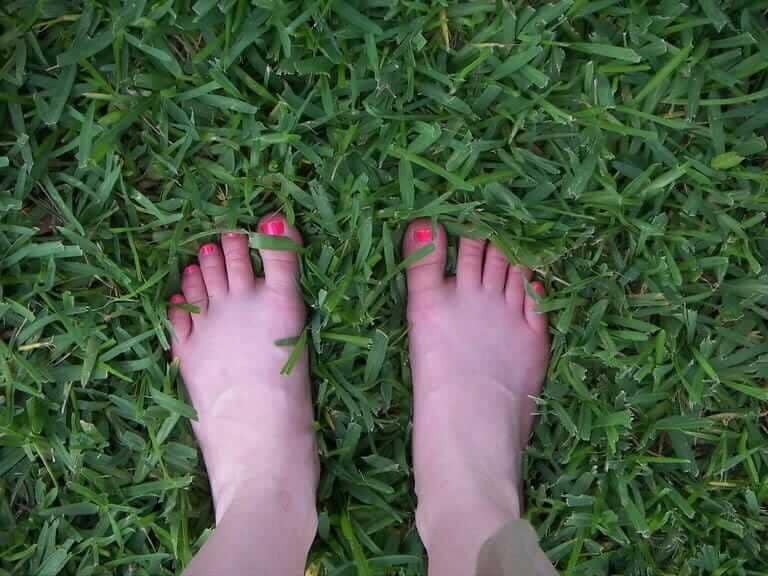Comprehensive Guide to Choosing the Right Turfgrass
Everyone that has done lawn care for awhile has been asked to recommend grass types. If you live in a cool-season grass area, you are probably choosing grass to overseed and renovate customer lawns regularly.
Suggesting the perfect grass type for a lawn can be a daunting task, especially with the hundreds of varieties available today. The right grass for your lawn depends on multiple factors, such as climate, maintenance requirements, and the specific conditions of your yard.
While we can't make decisions for you or your customers, this guide will help you understand the different grass types available, their attributes, pros and cons, and where they perform best. By the end of this guide, you'll be better equipped to choose the right turfgrass variety that best suits your needs.
Considerations for Choosing Grass Type
Before diving into the specifics of each turfgrass type, it's important to consider what you're looking for in your lawn. Here are some factors to think about:
- Maintenance Required: Some grass species require more care, such as frequent mowing, watering, and fertilizing, while others are more low-maintenance.
- Climate Conditions: Different grasses thrive in different climates, whether humid, coastal, dry, or cool.
- Temperature Tolerance: Some grasses perform better in warmer climates, while others are more suited to cooler temperatures.
- Drought Resistance: Drought-resistant grasses can survive with less water, making them ideal for areas prone to dry conditions.
- Shade Adaptation: If your lawn has shaded areas, you'll need a grass variety that can thrive with limited sunlight.
- Wear Resistance: This refers to how well a grass type can recover from foot traffic, making it important for lawns that get a lot of use.
Now, let’s explore the advantages and disadvantages of various grass types based on these considerations.
Grass Types for Shady Areas
1. Fine-Leaf Fescue (Cool Season)
Pros:
- Highly shade tolerant, making it one of the best choices for areas with limited sunlight.
- Drought-resistant, meaning it can survive longer periods without water.
- Some varieties, such as Aurora, are more disease-resistant.
Cons:
- Does not tolerate heavy foot traffic; best suited for lawns with limited activity.
- Requires careful management to prevent overgrowth in shady areas.
Additional Information: It’s known for its fine texture and soft feel underfoot. Despite its delicate appearance, fine-leaf fescue is quite hardy and can survive in less-than-ideal conditions, particularly in the shade. However, because it doesn't handle traffic well, it’s better suited for ornamental lawns than for areas where children or pets frequently play.
2. Tall Fescue (Transition Zone)
- Pros:
- Low maintenance, requiring less frequent mowing and fertilizing.
- Offers good drought resistance, making it suitable for areas with inconsistent rainfall.
- Tolerates light to moderate foot traffic.
- Cons:
- Not as shade tolerant as fine-leaf fescue, but still performs better in shade than many other grasses.
- May appear coarse compared to other finer-textured grasses.

3. Bahia Grass (Warm Season)
Pros:
- Low-growing and requires minimal maintenance, making it ideal for homeowners who prefer a low-effort lawn.
- Coarse texture helps it form a thick turf that competes well against weeds.
- Performs well in sandy, infertile soils.
- Cons:
- Not very shade tolerant; performs best in full sun.
- Can become sparse and patchy in shaded or poorly drained areas.
Additional Information: Bahia grass is native to South America and is well-suited to warm, humid climates. It’s commonly used in the southeastern United States, where it’s valued for its ability to thrive in poor soil conditions.
However, its coarse texture and lower shade tolerance make it less desirable for homeowners looking for a lush, fine-textured lawn. Bahia grass is also known for its ability to fend off weeds and pests, making it a good low-maintenance option.
4. St. Augustine Grass (Warm Season)
Pros:
- Tough and vigorous, capable of forming a thick, weed-resistant turf.
- Tolerates some shade, making it suitable for partially shaded lawns.
- Quick to establish, providing a lush, green lawn relatively quickly.
Cons:
- Requires frequent watering, mowing, and fertilizing, making it a high-maintenance option.
- Not very drought-tolerant; may go dormant during extended dry periods.
Additional Information: St. Augustine grass is a popular choice in southern coastal regions due to its ability to thrive in warm, humid climates. It’s known for its broad, flat blades and vibrant green color.
St. Augustine grass is often used in residential lawns, parks, and golf courses. While it does require more maintenance than some other grass types, its ability to thrive in shaded areas makes it a good choice for lawns with large trees or other obstructions.
Grass Types for Hot Climates
1. Bahia Grass (Warm Season)
Pros:
- As mentioned earlier, it’s low-growing, requires less maintenance, and has a coarse texture that helps it fend off weeds.
- Performs exceptionally well in hot climates, particularly in sandy soils.
Cons:
- Limited shade tolerance and may not perform well in areas with significant tree cover.
- Can become patchy if not properly maintained.
Additional Information: Bahia grass is well-suited to hot climates and is particularly popular in the southeastern U.S. It’s drought-resistant and can survive on minimal water once established.
However, Bahia grass can be prone to weed invasion if not properly maintained, and its coarse texture may not appeal to all homeowners.
2. Bermuda Grass (Warm Season)
Pros:
- Fine texture and excellent wear tolerance, making it ideal for lawns that see a lot of foot traffic.
- Vigorous growth habit, quickly filling in bare spots.
- Highly drought-tolerant and can survive on minimal water once established.
Cons:
- Not suitable for shaded areas; performs best in full sun.
- Can develop a thatch layer if not properly managed, which can impede water and nutrient absorption.
Additional Information: Bermuda grass is one of the most popular grass types for warm climates, particularly in the southern U.S. It’s known for its dense, fine-textured turf and its ability to withstand heavy use.
Bermuda grass is often used on sports fields, golf courses, and residential lawns. However, its aggressive growth habit means it can quickly take over garden beds and other areas if not properly controlled.
3. Seashore Paspalum (Warm Season)
Pros:
- Excellent tolerance for sandy soils and salt, making it ideal for coastal areas.
- Holds up well to drought and moderate foot traffic.
- Can handle wet conditions better than many other warm-season grasses.
Cons:
- Requires regular mowing and fertilizing to maintain its appearance.
- Not as cold-tolerant as some other warm-season grasses.
Additional Information: Seashore paspalum is a highly adaptable grass that’s often used in coastal regions where salt and sandy soils are prevalent. It’s known for its bright green color and ability to thrive in less-than-ideal conditions.
While seashore paspalum requires more maintenance than some other warm-season grasses, its unique ability to tolerate salt makes it invaluable in coastal landscapes.
4. St. Augustine Grass (Warm Season)
Pros:
- As mentioned earlier, it’s tough, vigorous, and forms a thick, weed-resistant turf.
- Performs well in both sunny and partially shaded areas.
Cons:
- High maintenance, requiring frequent watering, mowing, and fertilizing.
- Not very drought-resistant; needs regular watering to stay green.

5. Zoysiagrass (Warm Season/Transition Zone)
Pros:
- Slow-growing and forms a dense, durable turf that’s highly resistant to foot traffic.
- Drought-tolerant once established, though it benefits from regular watering.
- Can tolerate a range of soil types, including sandy and clay soils.
Cons:
- Slow to establish, meaning it can take longer to fill in bare spots compared to other grasses.
- Prone to thatch buildup, which requires regular dethatching to maintain healthy growth.
Additional Information: Zoysiagrass is a versatile grass that can thrive in both warm-season and transition zones. It’s known for its fine texture, dense growth habit, and ability to withstand heavy use.
While zoysiagrass does require more time to establish, its low-maintenance requirements and drought tolerance make it a popular choice for homeowners looking for a durable, resilient lawn.
Grass Types for Cold Climates
1. Fine-Leaf Fescue (Cool Season)
Pros:
- Excellent shade tolerance, making it ideal for areas with limited sunlight.
- Drought-resistant and can survive longer periods without water.
- Some varieties, such as Aurora, are more disease-resistant.
Cons:
- Does not tolerate heavy foot traffic; best suited for ornamental lawns.
- May require overseeding to maintain density in high-use areas.
2. Kentucky Bluegrass (Cool Season)
- Pros:
- One of the hardiest cool-season grasses, capable of withstanding cold weather and filling in bare spots quickly.
- Fine texture and rich green color make it a popular choice for residential lawns.
- Recovers quickly from damage, making it ideal for high-use areas.
- Cons:
- Requires more frequent mowing and watering than some other cool-season grasses.
- Not very shade-tolerant and does not perform well in areas with limited sunlight.
- Sensitive to salt, making it less suitable for areas near roads or sidewalks that are treated with salt in winter.
While Kentucky bluegrass requires more maintenance than some other cool-season grasses, its ability to thrive in cold climates and its resilience make it a popular choice for homeowners and landscapers alike to thrive in cold climates and its resilience make it a popular choice for homeowners and landscapers alike.

Grass Types for Drought Resistance
1. Tall Fescue (Transition Zone)
- Pros:
- Low maintenance and offers good drought resistance, making it ideal for areas with inconsistent rainfall.
- Tolerates light to moderate foot traffic, making it a versatile choice for lawns and sports fields.
- Cons:
- Not as shade-tolerant as some other grasses, though it performs better in shade than many warm-season grasses.
- May require overseeding to maintain density in high-traffic areas.
Additional Information: Tall fescue is a popular choice for drought-prone areas due to its deep root system, which allows it to access water from deeper in the soil. This makes it more resilient during dry periods compared to grasses with shallower root systems.
Tall fescue is also known for its ability to adapt to a wide range of soil types and conditions, making it a versatile choice for many homeowners.
2. Bahia Grass (Warm Season)
- Pros:
- As mentioned earlier, it’s low-growing, requires less maintenance, and has a coarse texture that helps it fend off weeds.
- Highly drought-resistant, making it ideal for hot, dry climates.
- Cons:
- Limited shade tolerance and may not perform well in areas with significant tree cover.
- Can become patchy if not properly maintained.
3. Bermuda Grass (Warm Season)
- Pros:
- Fine texture and excellent wear tolerance, making it ideal for lawns that see a lot of foot traffic.
- Highly drought-tolerant and can survive on minimal water once established.
- Cons:
- Not suitable for shaded areas; performs best in full sun.
- Can develop a thatch layer if not properly managed.
4. Buffalograss (Warm Season)
- Pros:
- One of the few native North American grasses, known for its exceptional drought tolerance.
- Requires minimal maintenance and can survive in poor soil conditions.
- Cons:
- Not very wear-resistant; does not hold up well to heavy foot traffic.
- Tends to turn brown during extreme heat or cold, making it less attractive during those periods.
Additional Information: Buffalograss is a warm-season grass native to the Great Plains of North America. It’s highly drought-tolerant and can survive on minimal water, making it ideal for xeriscaping and other low-water landscaping practices.
While buffalograss is not the best choice for high-traffic areas, its low maintenance requirements and ability to thrive in poor soil conditions make it a popular choice for sustainable landscaping.
5. Seashore Paspalum (Warm Season)
- Pros:
- Excellent tolerance for sandy soils and salt, making it ideal for coastal areas.
- Holds up well to drought and moderate foot traffic.
- Cons:
- Requires regular mowing and fertilizing to maintain its appearance.
- Not as cold-tolerant as some other warm-season grasses.
6. Zoysiagrass (Warm Season/Transition Zone)
- Pros:
- Slow-growing and forms a dense, durable turf that’s highly resistant to foot traffic.
- Drought-tolerant once established, though it benefits from regular watering.
- Cons:
- Slow to establish, meaning it can take longer to fill in bare spots compared to other grasses.
- Prone to thatch buildup, which requires regular dethatching to maintain healthy growth.
Grass Types for High-Use/Traffic Areas
1. Perennial Ryegrass (Cool Season and Over-Seeding in Warm Season Areas)
Pros:
- Medium texture and excellent wear tolerance, making it ideal for lawns that see a lot of foot traffic.
- Handles drought conditions without requiring a lot of additional watering or fertilizing.
- Mixes well with other grass types, making it a popular choice for overseeding.
Cons:
- Does not perform well in shaded areas; requires full sun for optimal growth.
- May require overseeding to maintain density in high-traffic areas.
Additional Information: Perennial ryegrass is a cool-season grass that’s often used for overseeding in warm-season areas. Its rapid establishment and fine texture make it a popular choice for sports fields, golf courses, and residential lawns.
While perennial ryegrass is not as shade-tolerant as some other grasses, its ability to withstand heavy use and its resilience in drought conditions make it a valuable addition to any lawn.
2. Kentucky Bluegrass (Cool Season)
Pros:
- One of the hardiest cool-season grasses, capable of withstanding cold weather and filling in bare spots quickly.
- Fine texture and rich green color make it a popular choice for residential lawns.
- Recovers quickly from damage, making it ideal for high-use areas.
Cons:
- Requires more frequent mowing and watering than some other cool-season grasses.
- Not very shade-tolerant and does not perform well in areas with limited sunlight.
- Sensitive to salt, making it less suitable for areas near roads or sidewalks that are treated with salt in winter.
3. Bermuda Grass (Warm Season)
Pros:
- Fine texture and excellent wear tolerance, making it ideal for lawns that see a lot of foot traffic.
- Vigorous growth habit, quickly filling in bare spots.
- Highly drought-tolerant and can survive on minimal water once established.
Cons:
- Not suitable for shaded areas; performs best in full sun.
- Can develop a thatch layer if not properly managed.
Additional Information: It’s prized for its ability to withstand heavy use and its resilience in hot, dry conditions. Bermuda grass is frequently used on sports fields, golf courses, and residential lawns due to its fine texture and dense growth habit.
4. Zoysiagrass (Warm Season/Transition Zone)
Pros:
- Dense and durable turf that is highly resistant to foot traffic, making it ideal for high-use areas.
- Drought-tolerant once established, although it benefits from regular watering to maintain its lush appearance.
- Can tolerate a range of soil types, including sandy and clay soils.
Cons:
- Slow growth rate means it takes longer to establish and fill in bare spots compared to other grasses.
- Prone to thatch buildup, which necessitates regular dethatching to keep the turf healthy.
Additional Information: Zoysiagrass is often chosen for its resilience and ability to withstand heavy foot traffic. It’s a popular choice for golf course fairways, sports fields, and residential lawns in warm-season and transition zones. While it’s slower to establish than some other grasses, its dense growth habit helps it resist weeds and recover from damage.
Grass Types for Low-Maintenance Requirements
1. Fine-Leaf Fescue (Cool Season)
Pros:
- Highly shade-tolerant, making it a good choice for lawns with significant tree cover.
- Drought-resistant and requires less watering than many other grass types.
- Some varieties, such as Aurora, are more disease-resistant, reducing the need for chemical treatments.
Cons:
- Not suitable for high-traffic areas, as it does not recover well from wear.
- May require occasional overseeding to maintain density, particularly in high-use areas.
Additional Information: Fine-leaf fescue is known for its ability to thrive in low-light conditions and poor soil, making it one of the most low-maintenance grass options available. It’s often used in shady areas where other grasses struggle to survive.
While it doesn’t handle heavy foot traffic well, it’s an excellent choice for ornamental lawns or areas with minimal activity. Fine-leaf fescue’s low water and fertilizer requirements make it an environmentally friendly option for eco-conscious homeowners.
2. Tall Fescue (Transition Zone)
Pros:
- Low maintenance, requiring less frequent mowing and fertilizing compared to other grass types.
- Good drought resistance, making it suitable for areas with irregular rainfall or limited irrigation.
- Tolerates light to moderate foot traffic, making it a versatile choice for both residential and commercial use.
Cons:
- Not as shade-tolerant as some other cool-season grasses, though it performs better in shade than many warm-season varieties.
- May appear coarser than other fine-textured grasses, which might not appeal to everyone.
Additional Information: Tall fescue is a popular choice for homeowners seeking a low-maintenance lawn that still offers good durability and drought resistance. It’s well-suited to a variety of climates, particularly in the transition zone where other grasses may struggle.
Tall fescue’s deep root system allows it to access water from deeper in the soil, reducing the need for frequent watering. This grass is also relatively resistant to pests and diseases, further reducing the need for chemical treatments.
3. Bahia Grass (Warm Season)
Pros:
- Extremely low-maintenance, requiring minimal mowing, fertilizing, and watering.
- Coarse texture helps it form a thick, weed-resistant turf.
- Performs well in sandy, infertile soils, making it ideal for poor soil conditions.
Cons:
- Limited shade tolerance, performing best in full sun.
- Can become sparse and patchy in shaded or poorly drained areas.
Additional Information: Bahia grass is one of the best choices for homeowners who prefer a "set it and forget it" approach to lawn care. Native to South America, it’s well-suited to warm, humid climates and can thrive in poor soil conditions where other grasses might struggle.
Its coarse texture and low water requirements make it a practical choice for large properties or areas where maintenance is minimal. However, if a lush, fine-textured lawn is your goal, Bahia grass might not be the best option.
4. Buffalograss (Warm Season)
Pros:
- Native to North America, making it well-adapted to local conditions and highly drought-resistant.
- Requires very little maintenance, including minimal watering, mowing, and fertilizing.
- Can survive in poor soil conditions and is highly resistant to pests and diseases.
Cons:
- Not suitable for high-traffic areas, as it doesn’t recover well from wear.
- Tends to turn brown during extreme heat or cold, which can detract from its appearance.
Additional Information: Buffalograss is a popular choice for xeriscaping and other low-water landscaping practices, particularly in the western U.S. where water conservation is a priority. It’s one of the few native North American grasses, and it’s particularly well-suited to dry, arid climates.
Buffalograss requires minimal care and can thrive in poor soil conditions, making it an excellent choice for low-maintenance lawns. However, its tendency to go dormant and turn brown during extreme weather conditions might not appeal to those seeking year-round green lawns.
5. Centipedegrass (Warm Season)
Pros:
- Coarse, fast-spreading, and low-growing, making it an excellent choice for low-maintenance lawns.
- Requires little fertilization and is more tolerant of poor soil conditions than many other grass types.
- Forms a thick, weed-resistant turf that requires minimal mowing.
Cons:
- Not drought-resistant; tends to turn brown in high heat or prolonged dry periods.
- Slow to establish and recover from damage, making it less suitable for high-traffic areas.
Additional Information: Centipedegrass is often referred to as the "lazy man's grass" due to its low maintenance requirements. Native to Southeast Asia, it’s well-suited to warm, humid climates and is particularly popular in the southeastern U.S. Centipedegrass is known for its slow growth rate, which reduces the need for frequent mowing and fertilizing.
However, its lack of drought tolerance means it’s better suited for areas with consistent rainfall or irrigation. Despite its low maintenance needs, centipedegrass can provide a lush, green lawn with minimal effort.
Conclusion
Choosing the right grass type for your lawn involves considering a variety of factors, including climate, maintenance requirements, and the specific conditions of your yard. Whether you’re looking for a grass that thrives in shade, withstands heavy traffic, or requires minimal care, there’s a variety that can meet your needs.
For Shade: Fine-leaf fescue and St. Augustine grass are excellent choices.
For Hot Climates: Bermuda grass, Bahia grass, and Zoysia grass perform exceptionally well.
For Cold Climates: Kentucky bluegrass and fine-leaf fescue are hard to beat.
For Drought Resistance: Tall fescue, Bermuda grass, and buffalograss are top contenders.
For High-Use Areas: Bermuda grass and Kentucky bluegrass are resilient options.
For Low-Maintenance: Bahia grass, buffalograss, and centipede grass require minimal care.
By understanding the pros and cons of each grass type, you can make an informed decision that will help you achieve the lawn of your dreams, whether it’s a lush, green carpet or a low-maintenance oasis.
Remember that no grass type is perfect for every situation, so prioritize the characteristics that are most important to you and your specific lawn conditions. With the right choice, you can enjoy a beautiful, healthy lawn for years to come.


